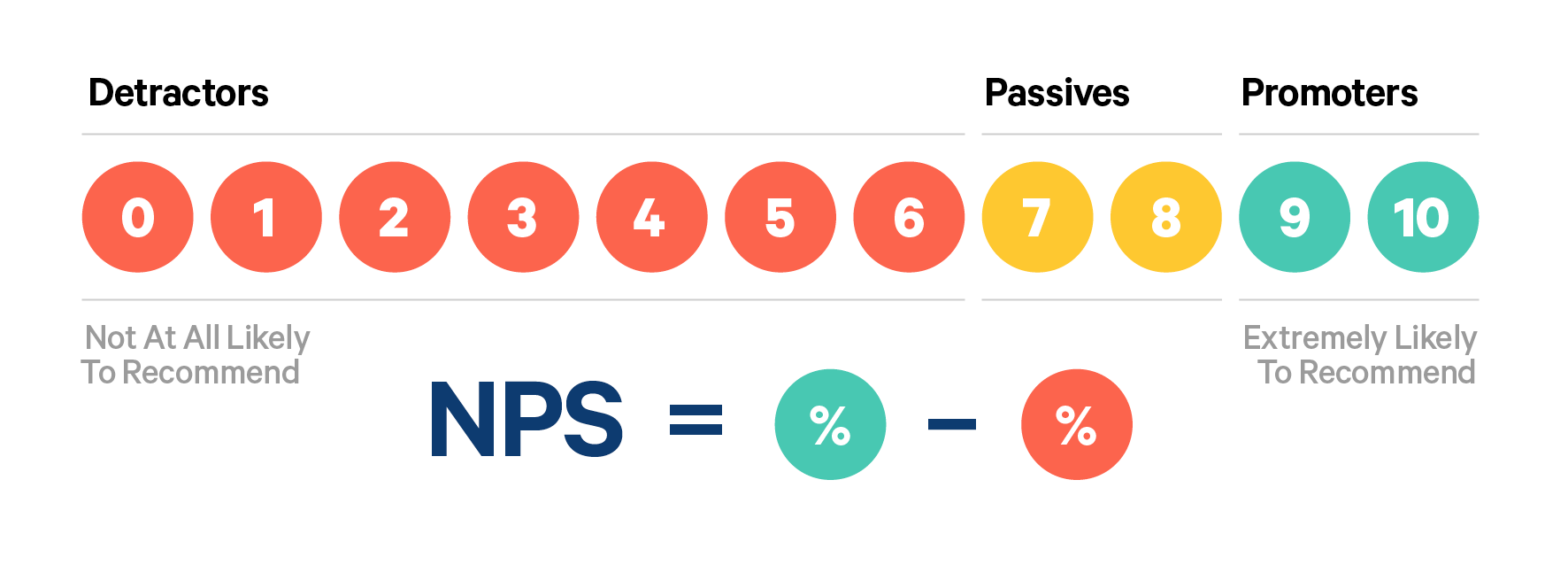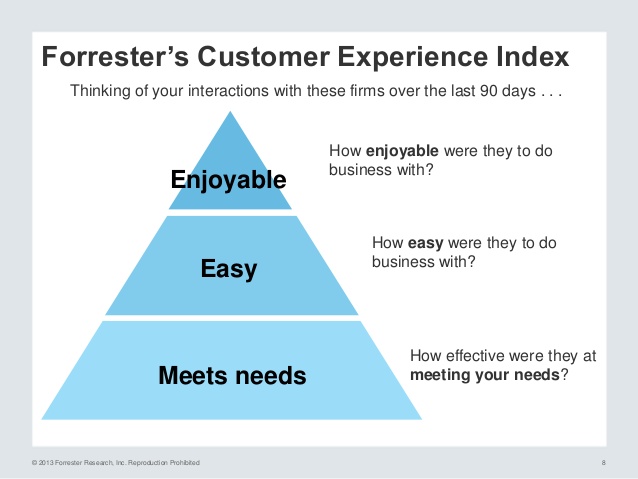As an organization, how do you know whether you really make the difference for your customers? By asking them once in a while! Nowadays, managers mostly don’t have the time to have more personal relationships with customers. Luckily, there are some techniques that can help you understand your customers better and get closer to them: Net Promoter Score, Customer Effort Score & Customer Experience Index are metrics that have proven to derive valuable customer insights.
The right techniques at the right moment
The response rate of surveys is in most cases less than 4%, so it would be reasonable to wonder whether these results would reflect your overall customer base. That is why you have to believe in the power ‘of the moment’. It’s best to ask your questions right after your customer had an interaction with your organization because customers are more likely to give feedback during these moments – that 4% response should increase significantly.
1. Net Promotor Score (NPS)
Today, a lot of companies use the Net Promoter Score to measure their Customer Experience. Net Promoter Score is a measurement technique based on one simple question: “Would you recommend us to someone else?”. The respondent gives a score of 0 (“No, I will not recommend you”) to 10 (“Yes, because I am really satisfied”).
The Net Promoter Score is then calculated by reducing the percentage of ‘Promoters’ (those who gave a score of 9 or 10) by the percentage of the ‘Detractors’ (those who rated the organization with a score of 6 or less). We do not take into account the customers who score 7 or 8 – they are ‘neutral’. That way, we get a number between -100 and +100. This reflects the power of your Customers’ Experience. A positive result means that more people would recommend your organization than not. This ultimately means you’re ‘doing a good job’. The Net Promoter Score, therefore, gives you an idea of the quality of your services but gives you no information about the ‘why’. If you achieve a bad Net Promoter Score, you would then have to start figuring out what went wrong and how you can correct it.
That way, we get a number between -100 and +100. This reflects the power of your Customers’ Experience. A positive result means that more people would recommend your organization than not. This ultimately means you’re ‘doing a good job’. The Net Promoter Score, therefore, gives you an idea of the quality of your services but gives you no information about the ‘why’. If you achieve a bad Net Promoter Score, you would then have to start figuring out what went wrong and how you can correct it.
2. Customer Effort Score (CES)
A second technique that is often used during Customer Experience Analyses is the Customer Effort Score. Instead of asking ‘Would you recommend us?’, you ask the question ‘How easy was it to deal with our company today?’.
The Net Promoter Score is mainly used to observe the general relationship with a company. On the other hand, the Customer Effort Score (CES) is used to measure the success of one specific journey. Suppose it’s easy for a customer to conclude a contract (CES = 8 out of a 0 to 10 scale), but it’s difficult to make an appointment with a technician when something goes wrong (CES = 4 out of a 0 to 10 scale). The Customer Effort Score gives you a deeper insight into the adjustments you should make to improve the service you provide.
The Customer Effort Score is calculated in the same way as the Net Promoter Score: % Easy -% Difficult. Here as well, you have a score of -100 (bad) to +100 (good).
3. Customer Experience Index (CXi)
As mentioned before, the Customer Effort Score focuses mainly on the question ‘How easy was it to deal with our company?’. Forrester’s Customer Experience Index (CX Index™) provides even more detail to get a better picture of customers’ needs and wishes. This index is an annual benchmark of customer experience quality among large global brands derived from Forrester’s proprietary consumer survey data.
The CX Index is based on the Customer Experience Pyramid, which says that good customer experiences are created from three things from the perspective of the customer:
- Was the interaction useful? (Meets Needs)
- Was it easy to do business with the organization? (Easy)
- Was it pleasant doing business with the organization? (Enjoyable)

By getting answers to these three questions, you get even more detailed insights into the quality of your services. For example: If the customer’s heating system got fixed (Meets Needs = 10), but he had to wait a week (Easy = 4) during winter (Enjoy = 2), there is still some work on the whole experience you offer as an organization.
Finally, it is important to note is that the CXI is calculated in the same way as both the Net Promoter Score and the Customer Effort Score i.e. the score reflects the difference between the promoters and the detractors and will lie between +100 and -100.

